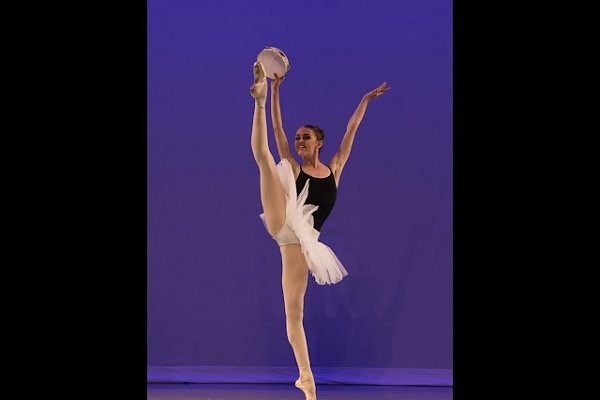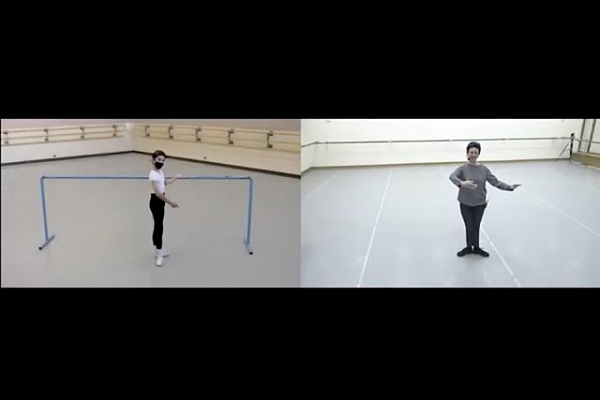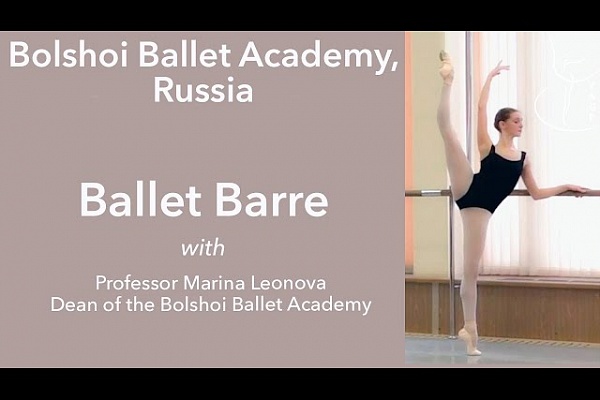These days, dance companies from Japan - The Tokyo Ballet, the New National Theater company, etc. are world-famous. Russia’s leading ballet companies tour Japan every year.
It is hard to imagine that in the middle of the 20th century people of Japan knew next to nothing about the Russian school of ballet, which was destined to become the foundation of ballet education in Japan – education kept in high regard and high estimate through the recent decades.
For many years, the Bolshoi Ballet Academy in Moscow has been training and educating students from Japan and sending the most prominent members of its faculty to the Land of Rising Sun to conduct ballet master classes.
We thought it would be a good idea to tell you about the first introduction of the Japanese student to classical ballet, about the foundation of the first ever ballet school in Tokyo and share the history of long-standing creative collaboration between the Bolshoi Ballet Academy in Moscow and Japan.
Japanese students were introduced to the Russian classical ballet in the begging of latter half of the 20th century. In 1959, with the cooperation from the Soviet Ministry of Culture, a decision was made to establish a P.I. Tchaikovsky

Opening of the P.I. Tchaikovsky Ballet School in 1960. (Photo – courtesy of https://biography.wikireading.ru/hUsB8ZLgW0)
Ballet School in Tokyo. Sulamith M. Messerer and Alexei A. Varlamov, icons of the Soviet ballet, were sent to Japan on a long-term teaching mission. In the morning, they conducted lessons, and in the afternoon – rehearsals. Sulamith Messerer was in charge of classes for children and for ladies, whereas Alexei Varlamov was in charge of classes for men and pas-de-deux classes.
The news about the arrival of ballet teachers form the USSR ran around Tokyo like wildfire. Sulamith Messerer recalled: “It was a race of students – from little children hiding behind their mothers’ kimonos, to people of such advanced an age that they could not possibly study ballet!”. The two teachers decided to enroll students who were six or older, but, as an experiment, they also enrolled several four-year-old children. Soon, the Tchaikovsky Ballet School had 350 students!

With Natalia Dudinskaya and Konstantin Sergeyev at the Tchaikovsky Ballet School. (Photo - courtesy of https://biography.wikireading.ru/hUsB8ZLgW0)
This is what Sulamith Messerer said about the features of teaching ballet to Japanese children: “Teaching dance, or whatever else, for that matter, to the Japanese is a true delight. It looks like they keep teachers in a regard higher than that of their parents. The Japanese traditions prescribe to regard teachers as life-long patrons”.

Tokyo. Teaching in progress. (Photo - courtesy of https://biography.wikireading.ru/hUsB8ZLgW0)
In the beginning, Sulamith Messerer had to use the services of an interpreter to communicate with her students, but the interpreter did not have a good command of the ballet vocabulary, hindering and complicating the communication between the teacher and her students. The Soviet Prima began to learn Japanese, and in a couple of months she was capable of conducting lessons without the interpreter. “I drew up a person and wrote pop-ups with Japanese words, such as “hand”, “leg’, “shoulders”, ‘head”, etc. on it. In the beginning, the pop-ups were very useful during my classes”.

Токио, 1960 год. (Photo - courtesy of https://biography.wikireading.ru/hUsB8ZLgW0)
The first show staged at the Tchaikovsky Ballet School was the Nutcracker with Vasili Vainonen’s choreography. It was also the first Nutcracker show ever staged in Japan! The show premiered in the Ueno Bunka Kaikan, with the participation of students from each class, The Tchaikovsky Ballet School Company toured Japan with the show. Some dancers from the Bolshoi ballet company participated in the performances. “In essence, our students took first steps of Japan’s ascension toward the pinnacles of ballet», said S. Messerer.

After the opening night of the Nutcracker. (Photo - courtesy of https://biography.wikireading.ru/hUsB8ZLgW0)
In 1962, S. Messerer staged a three-act show inspired by stories about the life on Ainu – an indigenous ethnic group from the North of Japan. The show, titled “Marimo”, is said to be the first ever national Japanese ballet.
The Tchaikovsky Ballet School ceased to exist in 1964, but its best students joined a group, which was named the Tokyo Ballet and led by Tadatsugu Sasaki. S. Messerer worked with the Tokyo Ballet Company as a choreographer. Nowadays, the Tokyo Ballet company is famous worldwide.

Sulamith Messerer and Tadatsugu Sasaki. (Photo - courtesy of https://biography.wikireading.ru/hUsB8ZLgW0)
In 1964, Sulamith Messerer received an invitation to stage the Don Quixote with Alexander Gorsky’s choreography in Japan. The performers only had eight days to learn the four-act ballet! Not only did they manage to learn the choreography, but performed at a decent level! “The show took place because of unprecedented discipline and effort of the Japanese ballerinas and performers”, recalled S. Messerer.
That was also the time the Japanese public had the first chance to see La Fille mal gardée, La Bayadère, Cinderella and some scenes from Paquita and Raymonda.

La Bayadère. Tokyo, 1980. (Photo - courtesy of https://biography.wikireading.ru/hUsB8ZLgW0)
In 1966, the Emperor of Japan awarded the Order of the Sacred Treasure (Zuihosho) to Sulamith Messerer, for her services to Japan and her contribution to the cultural and social life of the Land of Rising Sun.
Many decades have passed since the first trip of the two teachers to Japan. “Since the time of that first modest Nutcracker show we toughed out together with the students of the Tchaikovsky Ballet School in beginning of 1960’s, the Land of the Rising Sun has taken great strides toward the pinnacles of classical dance”, said S. Messerer in her memoires.
Now let us travel through time to 1985, the year of first tour of the Bolshoi Ballet Academy Company over Japan. Japanese dancers and choreographers attended performances by the Company, as well as demonstration lessons of classical dance, and became keen to get better acquainted with the ballet training methodology in use at the Academy.
Such interest toward the Russian ballet resulted in the establishment of the Soviet Ballet Institute under the aegis of the Bolshoi Ballet Academy. The Institute was established in 1988 in Tokyo. Its finding father and leader was Kenji Usui, a good friend and Professor Emeritus of the Bolshoi Ballet Academy. “Until then, it was impossible to get a professional ballet education in Japanese ballet schools, based upon the system in use at the Bolshoi Ballet Academy”, said Kenji Usui. Children from all over Japan applied for enrollment at the Institute. Applicants who passed the entrance testing successfully, became students of one of three classes: Juniors, Seniors or Professionals. Irina Y. Syrova was the first member of the Bolshoi Ballet Academy faculty to travel to Japan to teach students of the Institute. Systemic training, work ethic and motivation of the students combined with thorough tuition by the Academy’s teachers yielded splendid results in just a year. “All students tied their best to follow instructions and directions of their teachers. Their motions became better coordinated, their techniques improved and their dancing became more spirited”.

At the Bolshoi Ballet Academy theater. Marina Leonova, Principal of the Academy, and Kenji Usui. 2008. (Photo – courtesy of the Bolshoi Ballet Academy archive)

On stage of the Bolshoi Ballet Academy theater. Marina Leonova, Principal of the Academy, and Kenji Usui. 2008. (Photo – courtesy of the Bolshoi Ballet Academy archive)
The first gala concert show of the Soviet Ballet Institute (from March 1992 onward – the Russian Ballet Institute) students was staged three years after its establishment. The show included the “Concert Class” performance staged by Lyudmila A. Kolenchenko, Professor of the Bolshoi Ballet Academy. “The performance is a stage depiction of a classical dance lesson based upon the Russian system, starting with bar exercises, etc. In later years, it was the tradition of the Institute to open its gala shows with the “Concert Class’ performance, because it was the most complete demonstration of the direction of the Institute’s activities and a demonstration of the meaning of classical dance basics”.
The Russian ballet Institute rendered educational services for ten consecutive years. Irina Y. Syrova, Galina K. Kuznetsova, Lyudmila A. Kolenchenko, Natalia I. Revich and many other prominent members of the Bolshoi Ballet Academy faculty taught there.
For many years, activities of the Institute were a powerful contribution to the development of a ballet school in Japan. Ballet teachers from Russia were the first ones to introduce eight year-long training programs for special disciplines they used at the Bolshoi Ballet Academy. They also created training courses introducing methodologies and techniques of teaching classical dance and other choreography-related disciplines.
In 1990, senior students of the Institute had their first internship at the Academy. Some students were selected for full-time studies at the Academy. “Upon the completion of a three year-long training course at the Academy, students from Japan received state-recognized diplomas opening pathways to any professional ballet theater across the world”.
Within the framework of cultural exchange and collaboration, the Bolshoi Ballet Academy sends its teachers and students to tour Japan. Every time, the tour is very fruitful. The Academy Students perform at a variety of theater stages, whereas teachers conduct lessons in choreography-related disciplines. Marina Leonova, Principal of the Academy, has conducted numerous master classes in classical dance for Japanese performers. Alongside with that, Ms. Leonova has been a frequent member of judge panels at a variety of prestigious international ballet competitions in Japan. Such collaboration contributes to reinforcement of artistic connections between Russia and Japan in the field of ballet.
Asami Maki, Artistic Director of Japan’s New national Theater ballet company and the NNT Ballet School, emphasizes the impact of the Russian ballet methodology upon the development and evolution of the Japanese ballet school. The famous Japanese ballerina was first introduced to the Bolshoi Ballet Academy in 2011, at the 3rd International Ballet Academy Festival — Proteges at the Kennedy Center in the USA. Two years later, the Bolshoi Ballet Academy invited the NNT Ballet School company to participate in the “Three Centuries of World Ballet” Festival, where it presented the Triptych show. “We are endlessly thankful for the invitation to the Festival commemorating the jubilee of the Academy. Our school and our performers have been under tremendous impact of the Russian ballet, and the Festival will become an unforgettable experience for our students”, said Asami Maki before the Festival”.

“Three Centuries of World Ballet” Festival, 2013. L to R: Gigi Hyatt (Director of Studies, the Hamburg Ballet School), Frédéric Olivieri, (Director of Dance, La Scala Theatre Ballet School) , Asami Maki (Artistic Director, Ballet Company of New national Theater of Japan), Marina Leonova (Principal, the Bolshoi Ballet Academy), Laura Comi (Director of Rome Opera House Dance School), Angela Mendoza Cano (Director, Conservatory of Dance Carmen Amaya). (Photo – courtesy of the Bolshoi Ballet Academy archive)
These days, students from Japan also have an opportunity to pursue studies at the Bolshoi Ballet Academy. Every year, the Academy hosts internships for foreign students, including young dancers form Japan, and selects the most talented interns for full-time studies. In fact, students from 22 countries study at the Academy, but the majority of them are from Japan. Some students from Japan become laureates and finalists of Russian and international ballet competitions and festivals. Upon the graduation from the Bolshoi Ballet Academy, some graduates join ballet companies in Russia or abroad, whereas some young performers return to their home country and pursue acting careers reinforcing the Moscow Ballet School tradition in Japanese theaters. The Bolshoi Ballet Academy is proud of every student and graduate from Japan.
Outstanding students and graduates from Japan:

Haruka Toyoda, Bolshoi Ballet Academy student. (Photo – courtesy of the Bolshoi Ballet Academy archive)
Dance. Moscow Contest, Moscow, 2020 1st prize.
World Ballet GRAND PRIX, Moscow, the Bolshoi Ballet Academy, 2019 1st prize (Seniors group) and Golden Medal.

Mark Chino, Bolshoi Ballet Academy graduate. (Photo – courtesy of the Bolshoi Ballet Academy archive)
13th International Competition of Ballet Dancers and Choreographers, Moscow, the Bolshoi Theater, 2017 1st prize, Golden Medal and International Competition Laureate title
3rd All-Russia Competition of Young Performers – The Russian Ballet, Moscow, the Bolshoi Theater, 2017 3rd prize, Bronze Medal and Laureate title
ARABESQUE-2016 14th Open Competition of Ballet Performers dedicated to E. Maximova, Perm, Russia 2016 1st prize, Golden Medal (Juniors group) and International Competition Laureate title
Young Ballet of the World - 6th International Y. Grigorovich Competition, Sochi, Russia, 2016 1st prize, Golden Medal (Juniors group) and International Competition Laureate title
Vaganova-PRIX - 7th International Ballet Competition, Saint Petersburg, Russia, 2016 2nd prize, Silver Medal and International Competition Laureate title
ARABESQUE-2016 14th Open Competition of Ballet Performers dedicated to E. Maximova, Perm, Russia 2016 Journalists Choice Award “For Successful Mastering of Classical Choreography”
All-Russia Ballet Competition “Young Talents of Russia” under the aegis of the Russian Ministry of Culture, Moscow, 2016 Laureate diploma

Shintaro Aboshi, Bolshoi Ballet Academy student. (Photo – courtesy of the Bolshoi Ballet Academy archive)
World Ballet GRAND PRIX, Moscow, the Bolshoi Ballet Academy, 2019 1st prize (Juniors group) and Golden Medal
All Japan Ballet Competition 2019, Tokyo, Japan, 2019 Grand Prix (Juniors group, 13-15 y.o.)
Namue Ballet Performers Contest, Kyoto, Japan, 2019 1st prize (15-18 y.o. group)
All Japan Ballet Competition - Grand Championships 2018, Kobe, Japan, 2018 1st prize (classical dance, Seniors group)
Sudzu Yamamoto, Bolshoi Ballet Academy student
World Ballet GRAND PRIX, Moscow, the Bolshoi Ballet Academy, 2019 1st prize (Seniors group) and Golden Medal
Sana Claire Suzuki, Bolshoi Ballet Academy graduate
World Ballet GRAND PRIX, Moscow, the Bolshoi Ballet Academy, 2019 Encouragement prize, Diploma (Seniors group)
Hayato Nishijima, Bolshoi Ballet Academy Graduate
ARABESQUE-2016 14th Open Competition of Ballet Performers dedicated to E. Maximova, Perm, Russia 2016Diploma (Seniors group)
All-Russia Competition of Ballet Dancers and Choreographers, Moscow, 2015
Miho Okamura, Bolshoi Ballet Academy Graduate
Young Ballet of the World - 6th International Y. Grigorovich Competition, Sochi, Russia, 20161st prize, Golden Medal (Juniors group) and International Competition Laureate title. The Ballet Magazine Award “For Best Performance of Folk Dance Arranged for Stage Presentation”
References
- Institute of Arts Education of the Russian Education Academy.
- Arts Education Scientific magazine, #2, 2009. History of Arts Education. Activities of Russian teachers and choreographers in Japan. Olga A. Iwata. URL: http://old.art-education.ru/AE-magazine/archive/nomer-2-2009/ivata_07_06_2009.htm
- Sulamith. Fragments of Recollections. М.: Olympia Press, 2005. – 344 pages, pictures
- RIA Novosti online media. Moscow to host “Three Centuries of World Ballet” Festival. URL: https://ria.ru/20131105/974781214.html
- Photo materials – courtesy of https://biography.wikireading.ru/hUsB8ZLgW0















